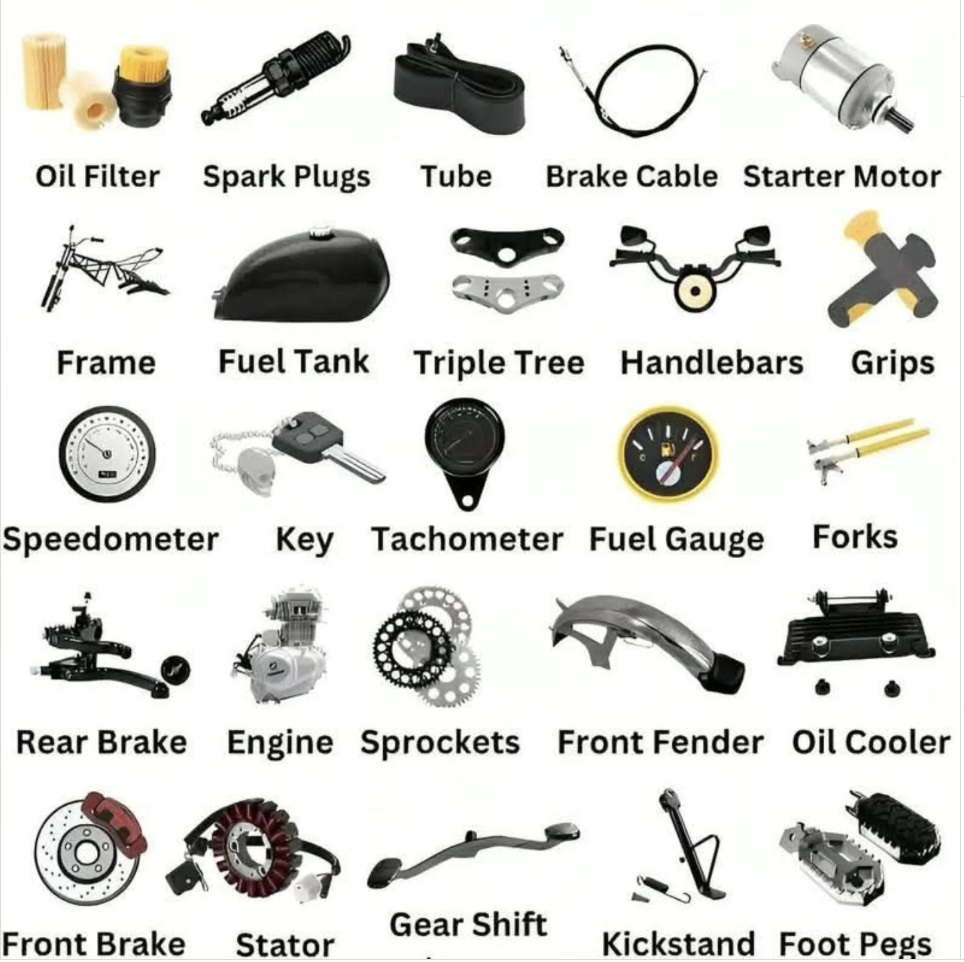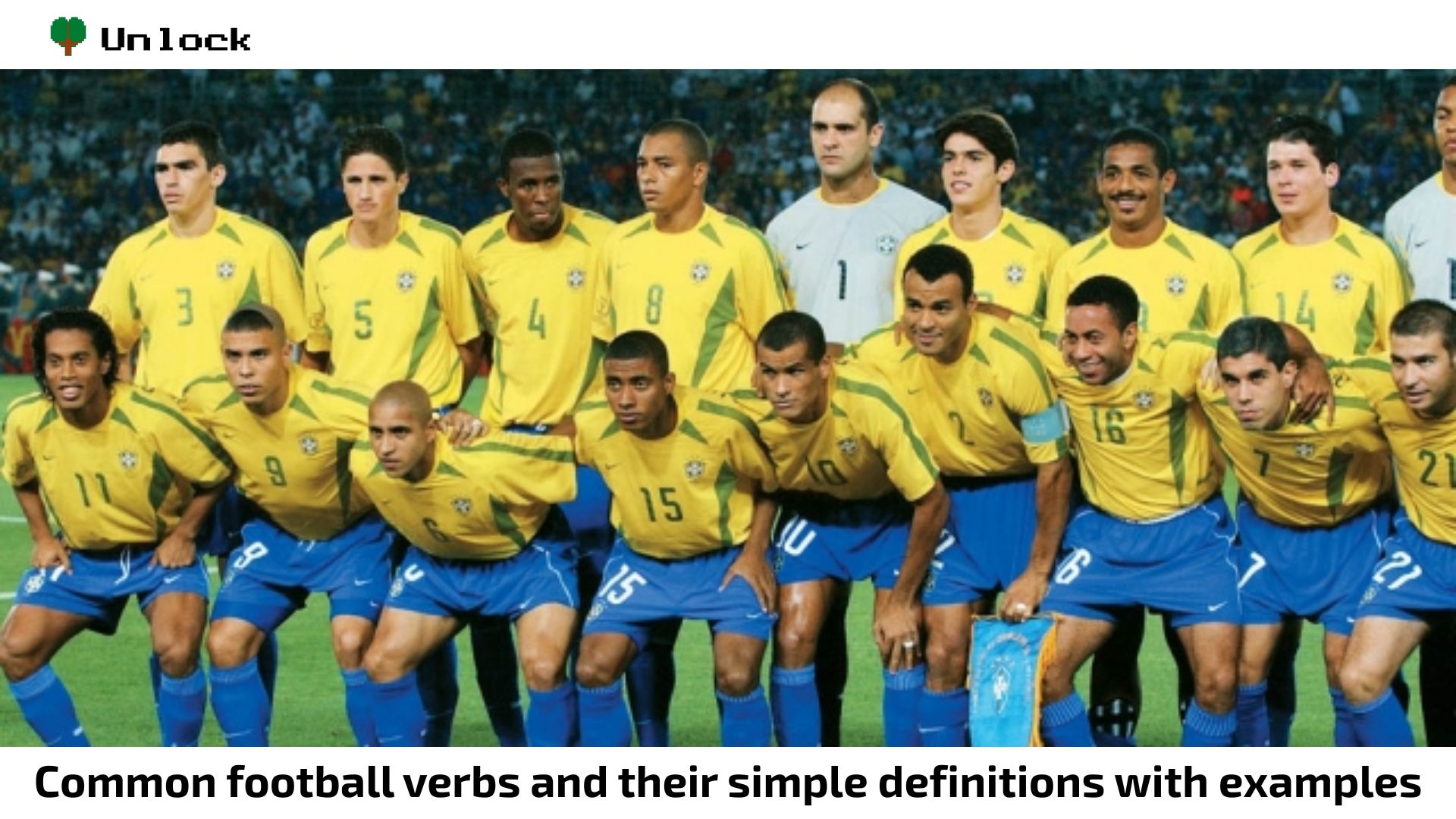
Motorcycle Parts - Vocabulary
A motorcycle comprises various essential parts that work together to enable movement and functionality. These include the engine, frame, wheels, tires, suspension, brakes, fuel tank, exhaust system, handlebars, and electrical system. Specific components within these larger systems include the engine, which provides power, and the transmission, which transfers that power to the wheel. Other crucial parts are the chassis (frame, front fork, and suspension), wheels and tires, brakes, fuel tank, and rider controls like handlebars, levers, and footpegs.

1. Chassis:
- Frame: The skeletal structure of the motorcycle, providing a base for all other components.
- Front Fork: Connects the front wheel and handlebar, enabling steering and handling.
- Rear Suspension: Absorbs bumps and vibrations, providing a comfortable ride.
- Subframe: Supports the seat and rear cowl.
2. Engine:
- Cylinder(s): Where combustion takes place to generate power.
- Pistons: Move up and down within the cylinders, converting combustion energy into mechanical energy.
- Crankshaft: Converts the reciprocating motion of the pistons into rotational motion.
- Carburetor/Fuel Injector: Mixes fuel and air for combustion.
- Spark Plug: Ignites the air/fuel mixture.
- Cooling System: Prevents the engine from overheating.
3. Transmission:
- Clutch: Connects and disconnects the engine from the transmission, allowing gear changes.
- Gearbox: Changes the gear ratio to adjust power output and speed.
- Final Drive: Transmits power from the gearbox to the rear wheel (chain, belt, or shaft).
4. Wheels and Tires:
- Wheels: Support the weight of the motorcycle and rider.
- Tires: Provide traction and grip on the road.
5. Brakes:
- Disc or Drum Brakes: Slow down or stop the motorcycle.
- Brake Levers/Pedals: Control the brakes.
6. Fuel Tank: Stores fuel for the engine.
7. Exhaust System:
- Exhaust Pipes: Carry exhaust gases away from the engine.
- Muffler/Silencer: Reduces engine noise.
8. Rider Controls:
- Handlebars: Control steering and direction.
- Throttle: Controls the engine speed.
- Clutch Lever: Controls the clutch, allowing for gear changes.
- Footpegs: Provide a place for the rider to rest their feet.
9. Electrical System:
- Battery: Powers the electrical components.
- Starter Motor: Starts the engine.
- Lights: Headlight, taillight, and turn signals.
- Ignition Switch: Controls the ignition system.
- Wiring Harness: Connects all electrical components.
10. Bodywork:
- Fairings: Streamlined panels that reduce drag and protect the rider.
- Windscreen: Protects the rider from wind and debris.
- Mudguards: Protect the rider and motorcycle from mud and debris.
- Seat: Provides a place for the rider to sit.
- Side Panels/Covers: Protect and conceal various components.
11. Other Important Parts:
- Mirrors: Allow the rider to see behind them.
- Speedometer/Tachometer: Displays speed and engine RPM.
- Kickstand: Holds the motorcycle upright when parked.
- Horn: Used to alert others.
- Indicator Lights: Show when turn signals are activated.

.png)






